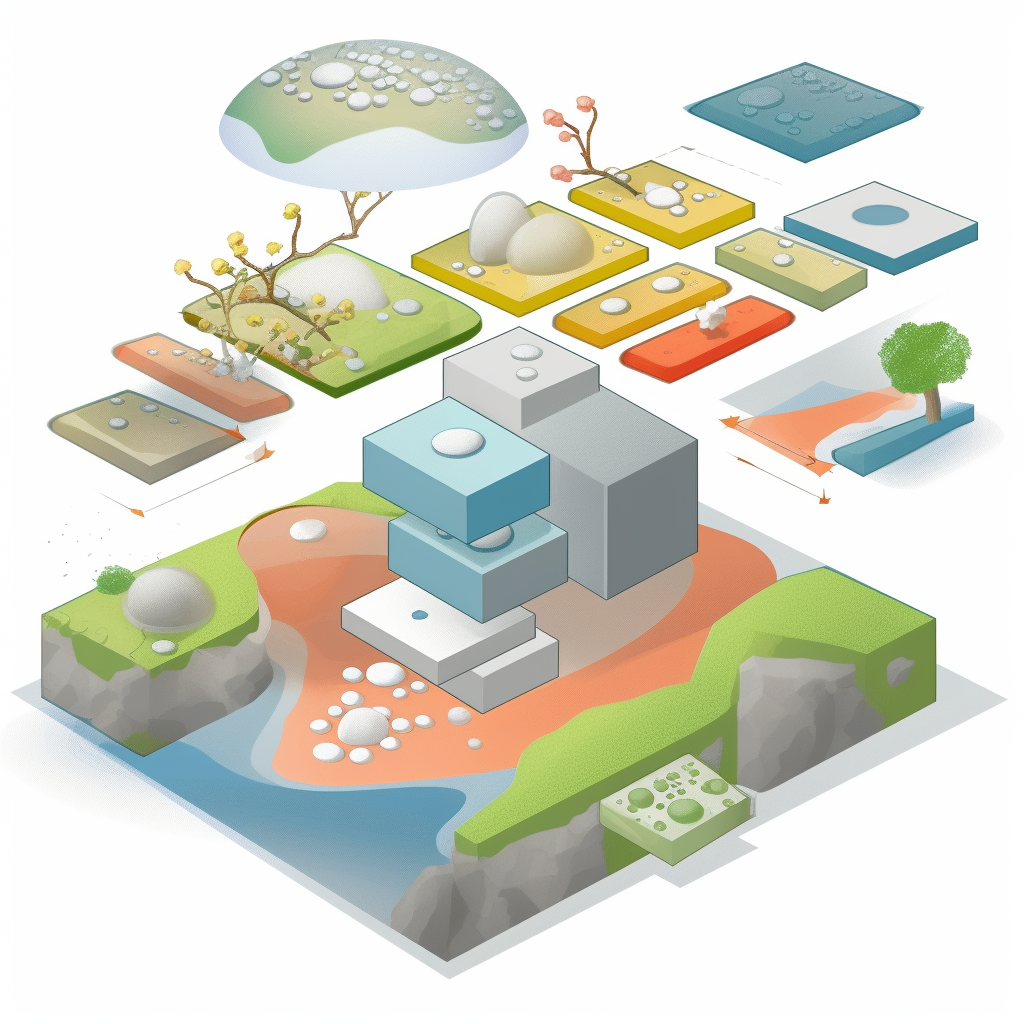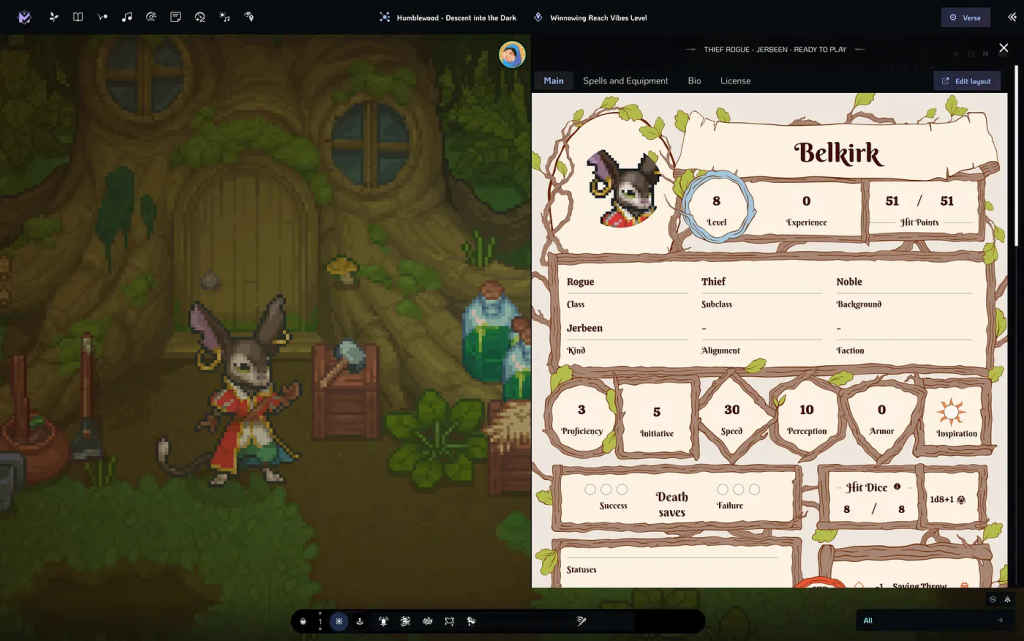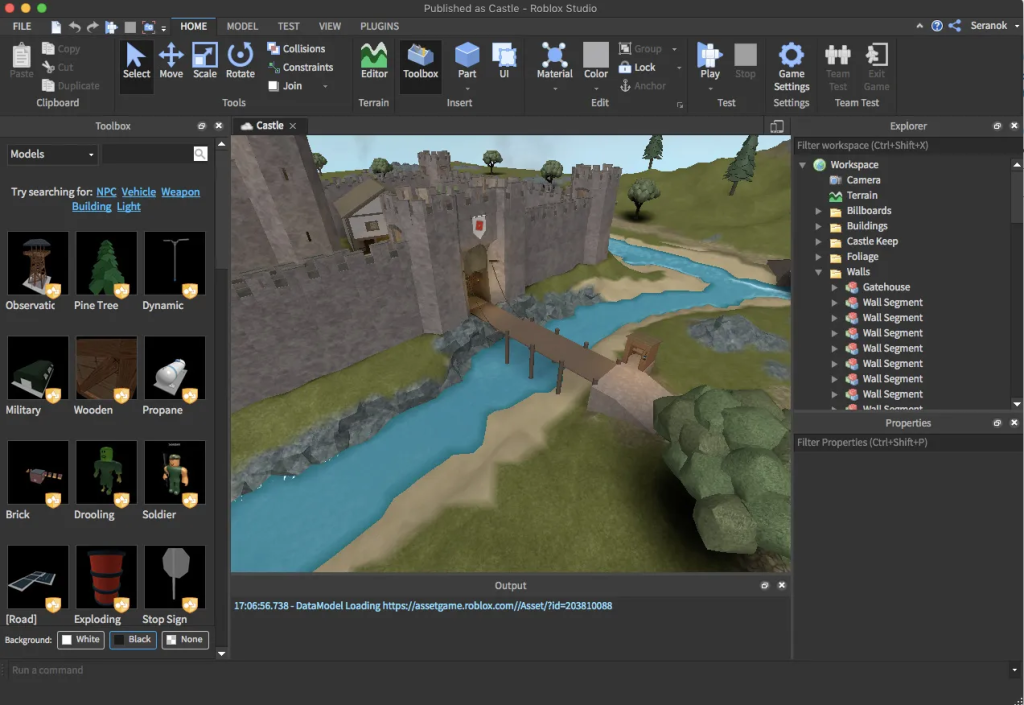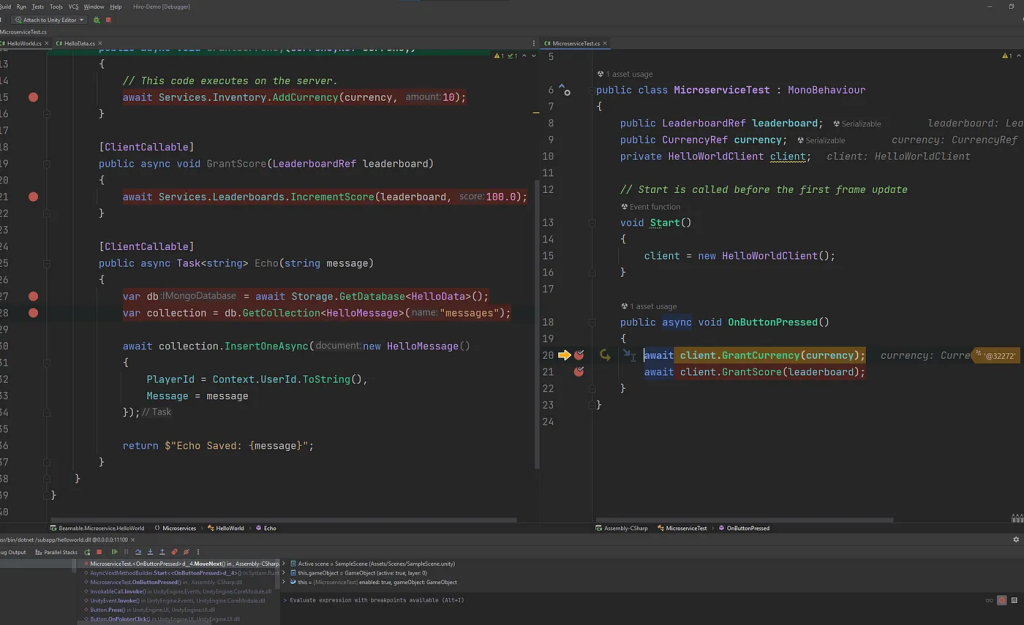
Composition, component, combination, connection, compositionality - all these words come from the same common Latin root. commeaning "together«.
What we can achieve together is stronger than what each of us can do alone.
This is the topic of this article: composability in the metaverse. We explain how the Internet in real time will use the creativity of each of us.

In this article, we will learn about the following:
- What composability, examples of composability in nature, art and technology
- Why we are at the forefront of a new era of the Internet, in which all aspects of the metaverse — from the semiconductor development stage to what we feel benefit from composability
- How create systems that favor composability
Why composability
People often define the metaverse in terms of one of several categories of technologies:
- Virtual world platforms that allow real-time gaming and social features (e.g. Roblox)
- Embodied experience using augmented or virtual reality (meta's vision)
- A Framework for Asset Interoperability, Distributed Computing, and Value Exchange in the Next Generation of the Internet (Web3)
The Metaverse includes all of these technologies. Beneath all this lies something deeper than technology: social and cultural evolution. Our digital identity and experiences are becoming just as as real and meaningful to our lives as our physical experience.
And at the core of our digital identity is what it means to be human: our self-expression, our communication, our creativity.
This is precisely what essence of composability: creativity - in media, in software, in art, in experience and in how we project our personality into the digital space. Whether we are creating something in Roblox, Unity or Unreal, designing an immersive space in VR or building a decentralized application, we rely not only on our own creativity, but also on the creativity of those who came before us.
Composability is compound interest?
Chris Dixon wrote that composability for software is the same as compound interest for finance. Nice analogy, but it doesn't go far enough.
At the beginning of this article, it was argued that composability is the most powerful creative force in the universe. Albert Einstein is said to have said the same about compound interest. If Einstein really said that, I believe he was speaking in metaphors - as he often did - and that it is the power of iteration and development of the past that is so powerful. That's what composability is.
Composability in nature
In between entrepreneurial adventures, the author was incredibly lucky study and teach computational biology and neuroscience alongside the brightest minds in genomics and vision. During this time, he gained a deep understanding of the biological systems of the brain and our genes, as well as the natural mechanisms of evolution. This experience made me see these metaphors in our culture and technology.
In the natural world, composability occurs when there are networks of not only biological structures, but also information - along with aggregation, transfer and iteration facilities.
On different timescales—whether it be the billions of years that evolution takes, or the shorter periods of epigenetic and neural development—it is compositionality that is at play.
Composability was at work when mitochondria, centuries before our era, coalesced into eukaryotic cells, which in turn gave rise to multicellular organisms.
Composability works in the world below the forest floor, connecting the food webs between life and death, plant and animal.
Composability works when the ancient code at the core of our cells instructs neurons to connect wires and fire in circuits that affect how we process information.
Composability operates in our natural information processing systems that have equipped many animals for communication, including the "language" of humans and our ability to engrave it into stone, paper, and electrons - telepathy through time and space.
“...we realized that life is more information than energy. Fire has most of the characteristics of life. It feeds, grows, multiplies. But fire does not store any information. He doesn't study; he doesn't adapt."
- Dennis E. Taylor, We are legion (We are Bob)
Composability in technology and culture
As with examples from the natural world, the context for composability arises in technology, where there are opportunities for combining, passing, and iterating components.
Composability works across the entire computing stack, from the end user experience to the semiconductors that it all run on.
Composability is what Jim Barksdale was talking about when the legendary CEO of Netscape said that bundling and splitting are the only ways to make money in business.
Composability works when you embed a YouTube video into another web page and learn recursive links to other videos from within. It is present in this very article that you are reading right now, as the author has linked and incorporated other parts of the wisdom of networks into this article.
Composability is when a DJ samples the music, or a hip-hop artist mixes them into a new track, a trend that has rapidly accelerated with the digitization of music and the availability of software for DJs and composers.
Composability comes into play when you repost a meme or repeat your own version of it.
Linkability is when you post your collaborative video on TikTok.
Composability comes into play when you download and install a Minecraft mod to create your own unique creation, mod a game, or design your own level.
Composability is central to what it means to have a hobby. It is collecting, customizing and sharing joy. Compatibility is when you buy a miniature from a hobby shop for your D&D campaign, paint it yourself, and then use it in multiple campaigns.
Composability also comes into play when you take code from an open source software repository and inject it into your project.

Composability comes into play when any protocol is built on top of TCP/IP, the underlying technology that allows Internet devices to communicate with each other.
Composability comes into play in hardware when you link high-speed CPUs and GPUs together, like how PCI or NVlink allows tens of billions of transistors to be recombined to optimize them for specific use cases:
Where there is no composability?
Composability is not always present.
Sometimes "gatekeepers" and "tool shops" seek to limit or monetize the flow of information and creativity. In other cases, the threat perceived by these stakeholders is composability.
Under such conditions, systems of control are more important than systems of creative release. We see it within cartels, in old guard financial networks, in "company cities" and technology platforms whose owners benefit the most when you stay inside them.
Composability creates new challenges, and some of the responses you sometimes hear about new technologies—whether it's blockchain and smart contract today, or social media in the last decade, or email in the 90s—had unintended consequences.
Security, privacy, trustworthiness, security are all part of the cycle of recycling, building new boundaries, and driving innovation as we alternate between unbridled creativity and building boundaries that protect the ability to continue.

In nature, the hypothesisred queen” argues that the emergence of sex was caused by the need to accelerate the evolutionary response of organisms in the face of parasites and viruses. That is why we have nuclear envelopes for our DNA, immune systems, and barriers between blood and brain.
The Red Queen also lives in our cultural and technological complex. Composability accelerates creativity and innovation. Security holes, social scalability issues, and collisions with existing institutions are inevitable. These systems are always playing catch up.
Composite Impressions
The composite experience dates back to at least the Paleolithic, when people began to tell and write down stories. It exploded in the workshops of the Renaissance, in the publishing industry spawned by the printing press, and in the advent of the mass media.
Today, the composite experience is growing exponentially due to the digitization of many forms of creativity. As is often the case, the cutting edge of this revolution took place in games and virtual worlds.
"Mods" are modifications to the base game that are made possible when the game provides interfaces to its code and content.
Some of the most successful games of all time started out as mods: Dota and Counterstrike are two of the most notable examples. In fact, Dota inspired a whole new category of games - Multiplayer Online Battle Arena (MOBA).

Minecraft is basically an entire composition platform.
Today, the line between creator and player is blurred. It started with the D&D dungeon master role (and today there is a whole industry of professional craftsmen). That is why the author sometimes calls D&D of the first metaverse. So it shouldn't come as a surprise that today you can play D&D and other board games through online platforms like Roll20 and Multiverse.

Overwolf is a "guild for in-game creators", which helps people monetize their creations in modded games.
Genius Roblox
Roblox is an all-in-one development platform and social network built on the principle of composability. The genius of Roblox lies in its amazing ability to harness the collective talent of its community.

The systems in Roblox teach us a lot about things that can accelerate the development of an environment built for composability:
- Ease of tools: Lua scripts, with tight integration between client and server development experience
- Compatible structure for general user, information and social objects
- Market for exchange code snippets and graphics assets
- social systems to facilitate discovery and association with each other in experience
Composability in meta games
Game meta is the experience that happens around the game - in communities, content, and the economy.
Composability also happens in the "meta" of popular games, not just within them. Streaming gameplay for the purpose of education and entertainment has become a large industry in its own right. Ninja, the biggest streamer on Twitch, has over 17 million followers.

From hyperlinks to portals
We have hyperlinks that connect the world's information on the Internet. Maybe it makes sense to create hyperportals that provide communication between different immersive worlds?
This feature is already available in some platforms, for example, in VRChat:
It can't be a "theme park" type of teleportation between worlds, like in World of Warcraft, where all economic factors are geared towards making sure you stay and never leave. But for worlds that are more social or interdependent, there are good reasons why they might want to cooperate through such connections.
Kim Nevelsteen created a set of portals that connect Minecraft worlds:
Nevelstin even demonstrated a concept in which he makes a connection between Doom and Minecraft or between various web platforms, such as Cryptovoxels.
Metamundo is a project that hopes to create a marketplace for 3D art assets for use in 3D worlds - essentially the "Unity Asset Store" for the metaverse - designed to reward creators for the variations that need to be created to deliver the same content through different interfaces. . One use case is "metaportal“which is conceived as a visual and smart contract architecture to unite the worlds.
Composite identity
As noted earlier, the metaverse is not just a confluence of technological innovation, it is a culture change. It is about projecting one's personality into a dematerialized and digitized space. It's about being who you want to be and taking your identity to where you want to go. Representing you in virtual space is avatar.
Gen Z understands this: they grew up with Roblox, Minecraft, and livestreaming. In Roblox, your avatar can be released from one specific game and taken with you. That is why Roblox invests in systemss, allowing you to remake digital models (i.e. "skins") for various form factors.
ReadyPlayerMe created avatar systemwhich is compatible with various platforms.
Company Crucible Networks works at the intersection of avatars and Web3 digital wallets, creating tools for embedding them into 3D mechanisms:

Privacy and sovereignty over one's own virtual identity will become an increasingly important issue. Will an oligopoly rule the identity systems of the future, as Google Sign-in and Facebook Sign-in did in the current generation of technology?
One way to protect your identity without putting it in the hands of a centralized authority is to use zero-knowledge proofs, which, through cryptography, allow you to reveal only the information you are willing to share with the other party.
In a world of compatible avatars, it's up to you to decide how you present yourself in compatible spaces - and what exactly you're willing to share.
Composite finance
Traditional finance has a huge number of gatekeepers and tenants – along with a confusing and outdated set of technologies that limit their compatibility. (Interesting fact: 43% financial institutions are still powered by COBOL and these technologies power $3 trillion in daily commerce). No wonder the iteration rate in these systems is so low.
When people talk about Web3 financial networks, they point to a lot of things - freedom from these institutions, lower fees, more independence, freedom from obsolete technologies, idealistic notions of independence... But what seems more interesting than all this idealism is the possibility bring composability to financial systems.
It's about this Piers Kix writeswhen explaining composability in the context of Web3 and the metaverse:
The new tools available mean this is an incredibly exciting time for entrepreneurs looking to create digital products and experiences. With composability, ecosystem participants can choose key pieces of infrastructure as they build, drawing on the experience of all those who have come before them.
Web3 financial network technology are on-chain programs (i.e. smart contracts) that provide interoperability of tokens and protocols.
And yes, these systems create new problems at the same time that they provide an opportunity for destructive creativity. The irreversibility of the blockchain is a harsh mystery - and fraud, scams and exploitable code remain a problem in 2022. These issues will need to be addressed with better digital wallets, better security, artificial intelligence, and a better user experience.
Play 2 Earn, Play & Earn… or Compose & Earn?
For virtual worlds and avatar systems, where interoperability and complementarity are critical, interoperable finance is the bridge between economic systems between parties that do not normally cooperate or trust each other.
So, some of the early products in the crypto gaming market used the “Play to earn” concept. The author does not really like games in which earnings are the main purpose of their existence, because this implies a constant demand for the result of this work. This is only possible if the majority of the experience revolves around the core entertainment value. Play and Earn may be a better brand for these games, because that's what happens in many games.
Magic the Gathering is a "play and earn" game (most people play and collect for fun, and only a small segment are scalpers and tournament players).
There will be new forms in which people will not just "play" to earn money - they will compose to earn money. They will be storytellers, designers, trainers, dungeon masters, and leaders.
In most cases, this will be done for fun, and in others it will become the basis of a career. And as new forms of interoperability (such as markets, avatars, etc.) emerge, there will be new opportunities for composition and play in the ecosystems of games and virtual worlds. Interoperable financial systems and interoperable creativity can become convergent forces for innovation: many of these markets and development mechanisms will be freed from costly reliance on specific platforms and their paid platforms.
Composite Computing
Network World describes composite infrastructure like cloud computing, which:
treats compute devices, storage devices, and network devices as pools of resources that can be provisioned as needed, depending on what different workloads require for optimal performance.
"Composable Compute" is just that, and all software that makes it easier for you to take your code, run it anywhere, combine it, reuse it, and learn from others.
There is a great fragmentation of the cloud infrastructure going on right now. In the past, you have bought entire nodes and pre-rendered services. Resources such as compute, storage, memory, and I/O bandwidth can now be bundled into solutions in a more cost-effective way as you mix and match and pay for the workloads used rather than the computers that are idle .
This led to the emergence serverless architectures that allow workloads to run without all the work that would normally require manual provisioning and management. However, enabling the world to take advantage of this serverless infrastructure also means building a software foundation for coordination and compositing.
One approach to compositivity is to allow programmers to write code that compiles to bytecode that can be run anywhere. This was the original idea behind platforms like Java. WebAssembly takes it to another level by allowing developers to code in their preferred language (Rust, Go, C++, or whatever) and ship platform-independent binaries that can run securely on all platforms, from web servers to web browsers. .
Another approach is to use container technology. Containers allow you to separate packages of code (including any libraries and dependencies you want to include in your program) into isolated units that can be delivered to different runtimes in the cloud—serverless cloud infrastructure, edge nodes, individual developer workstations, or even per device. end user.
Microservices is a software design pattern that takes advantage of containers to isolate pieces of software for specific use cases and limit interdependencies on storage and other shared resources. Combined with a serverless environment, you can expand your customer service capabilities as well as empower your team by maximizing reuse across systems and products.
The challenge with implementing microservices is that they often require new DevOps practices and polyglot technology stacks that make testing, debugging, versioning, and deployment much more difficult. Beamable specializes in games and creating meta versions, so they learned a lot from Roblox, which makes it easy to create client and server code in the same experience.
“We wanted to make it easy for game developers and meta creators to take advantage of this. What if we made it so that creators of games and open metaverses could have the simplicity of Roblox, but still be able to implement their game or experience the way you want? We've created a framework for Unity that allows creators to code, debug, and manage all their server-side code from within the IDE you already use for game development."

Ultimately, the goal of technologies like Beamable is to revolutionize compositing — to reduce the number of non-creative tasks that get in the way of the creative enterprise — along with a big leap in creative iteration, learning, and reuse.
Distributed Computing
Composite computing also means that workloads can be distributed exactly where they need to run. Many workloads depend on low latency, such as games, real-time social software, augmented reality, or AI applications that need to be located closer to sensors and other inputs. In other words, almost everything that is created in real time is intended for the metaverse.
This could mean a revolution in how we think about using the world's computing power. Edge nodes can become adjacent to cell towers; or "far end" could be as close as the device in your pocket. Along with "traditional" cloud computing infrastructures like Amazon Web Services (AWS) and Azure, a new generation of companies have emerged that are looking to push computing to this limit: Taubyte and Edgegap are two examples. Other companies such as Theta, CUDOS, and Dfinity are looking to create fully decentralized computing networks to exploit idle loops in data centers and desktops. Companies like Filebase and Akash are building canopies for decentralized resources like storage and computing that are compatible with established interfaces like those built for AWS.
Game streaming?
Once a game or meta version has been implemented into a scalable infrastructure, the last mile problem remains to be solved. In most games, this means handing over the game client to the user. In other cases, companies are building a streaming infrastructure to create the entire gaming experience in the cloud and stream it in a similar way to how you get video. But the big difference is that games and metas are interactive, real-time applications, so latency is a big issue — along with the sheer amount of GPU cloud power it requires.
An example of a company working on this issue is Polystream (now part of Mythic Games), which is working on a "command-streaming" approach: instead of generating virtual worlds in the cloud on GPUs and streaming the generated video to clients, they focus on passing commands required by the GPU. Then your desktop computer or mobile phone uses its own GPU to generate experiences, and is not just a "terminal" to receive streams.
Over the next few years, we will continue to see huge innovations in hardware and software to enable compositing in a scalable, secure, and affordable environment.
Conclusion
In nature, composite elements are characterized by methods of accumulation, transmission and reproduction of information.
The same thing happens in artificial systems. Composability is a mindset as much as technology. Start with your own team and make sure their path to creation is as simple as possible. Focus on reuse and learning. Favor platforms that unleash creativity rather than restrict it.
When you're ready: You can challenge yourself and turn your partners and customers into creators with you. Determine the ways in which the client can create, change or repeat what you give him. Increase the area of co-creation. In order to succeed in this endeavor, you need to make their creative tasks useful and as simple as possible.
Based articles
Translation author love mushroom
